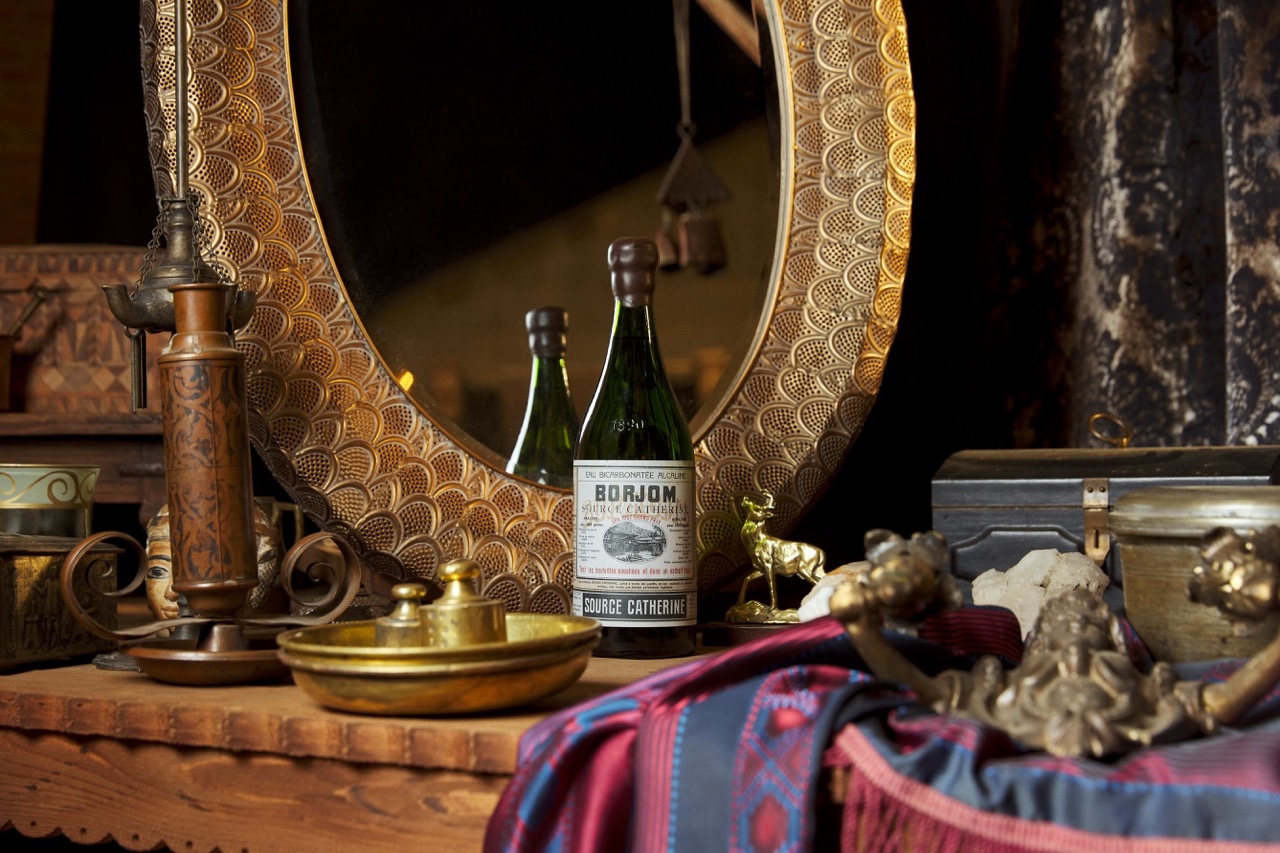
A Photo Archive for the Future
The first Georgian mineral water celebrates its 135th anniversary this year.
135 years ago, "Borjomi" was first bottled in an industrial manner. The oldest photos depicting "Borjomi" production are preserved in the Library of Congress in the United States. Their author is Sergei Prokudin-Gorsky, a pioneer of color photography.
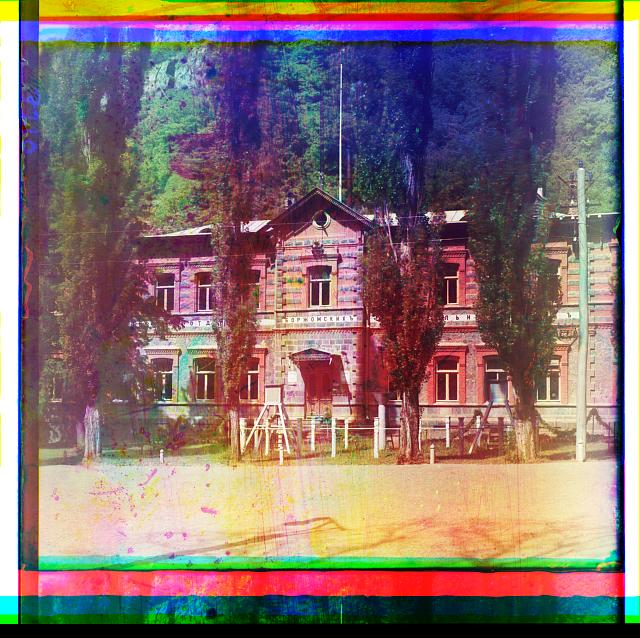
"Borjomi" mineral water production
Photo: Sergei Prokudin-Gorsky, U.S. Library of Congress
The Library of Congress archive contains 20 photographs depicting Borjomi and its valley landscapes, the Borjomi water factory, and mineral water sources:
- "Workers preparing Borjomi mineral water for transportation"
- "Mineral water bottling department"
- "At the mineral water source in Borjomi"
- "Borjomi resort, vacationers drinking therapeutic water"
- "View of Borjomi from Torsky Plateau"
- "Olga's Bridge"
- "Woman in traditional festive attire in Borjomi Park"
- "Mikhail Nikolayevich Romanov's Palace"
These are the titles given by Sergei Prokudin-Gorsky to the photographs he took in Borjomi between 1905 and 1915.
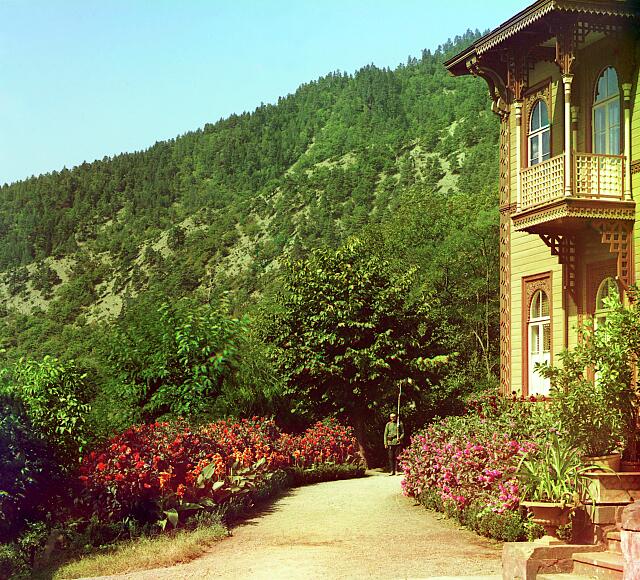
Palace of Mikhail Nikolayevich Romanov
Photo: Sergei Prokudin-Gorsky, U.S. Library of Congress
Sergei Prokudin-Gorsky first visited Georgia in 1905 and then again in 1912. He captured the first color photographs of Tbilisi, industrial photo reports in Batumi, newly planted tea plantations in Adjara, the Chakvi tea processing factory, and many other color photo documents of early 20th-century Georgia.
Prokudin-Gorsky dedicated his life to studying photography. He developed a camera that captured three consecutive frames on black-and-white film using blue, green, and red filters. With a projector of his own design, he was able to display astonishingly realistic color images.
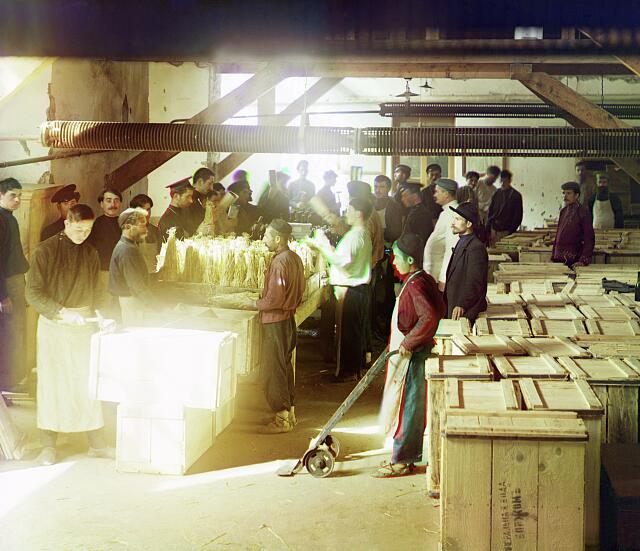
"Borjomi" mineral water factory, packaging department
Photo: Sergei Prokudin-Gorsky, U.S. Library of Congress
In 1909, Prokudin-Gorsky sought support from Russian Emperor Nicholas II to implement a unique project. He aimed to document the empire’s diverse history, culture, and modernization using new color photography technologies. The royal chancery immediately granted him unlimited permission to take photographs. A specially equipped Pullman railway car with a built-in photo laboratory was prepared for the expedition. He also had at his disposal steamships, boats, and a Ford automobile for traveling through unpaved roads.
The photographer traveled across Finland, the Caucasus, Crimea, Samarkand, Bukhara, and the Ural region, capturing nearly 10,000 photos that documented the Russian Empire in an unparalleled manner.
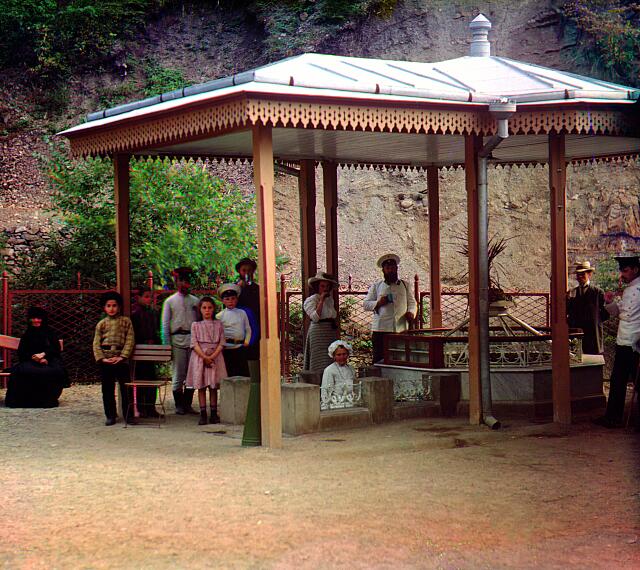
Borjomi mineral water pavilion - "Eugene's Spring"
Photo: Sergei Prokudin-Gorsky, U.S. Library of Congress
After the Bolshevik Revolution and the execution of the royal family in 1918, Prokudin-Gorsky fled to Norway and England before settling in France. He managed to take a significant portion of his photo archive with him. In Paris, he worked with the Lumière brothers and opened his own photography studio. Prokudin-Gorsky passed away in 1944.
In 1948, the U.S. Library of Congress purchased his glass-plate negatives from his heirs—a total of 1,902 negatives, 139 of which were taken in Georgia. This is how the unique photographic documents depicting the production of Borjomi mineral water ended up in the Library of Congress.